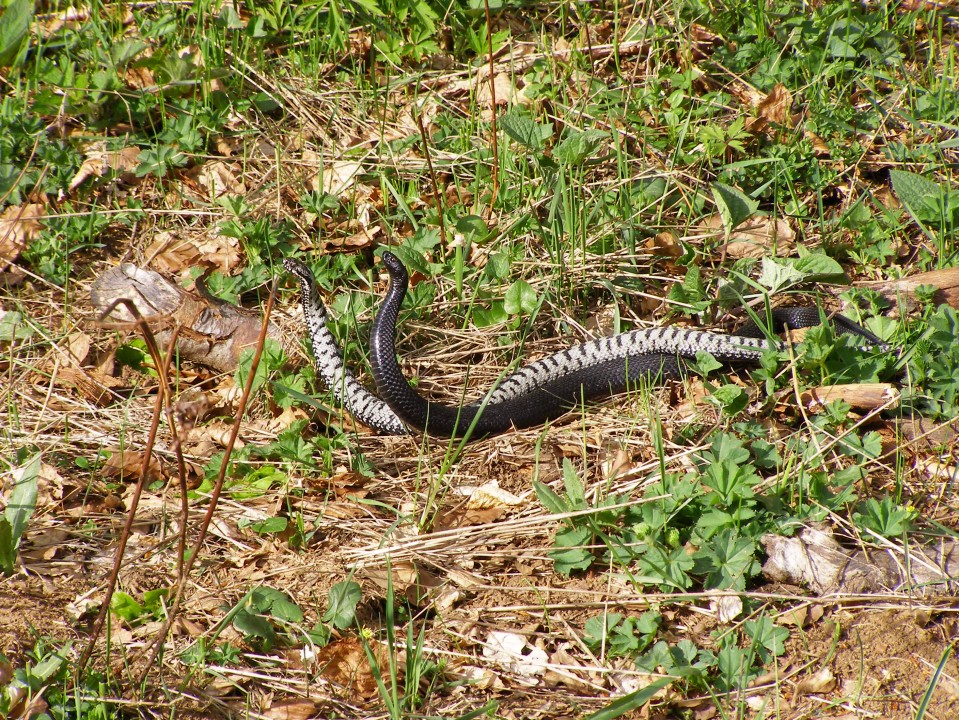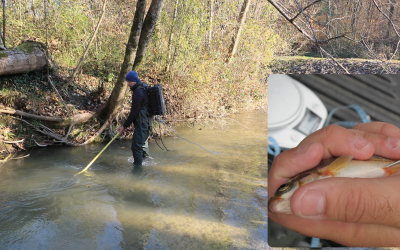Exploring the Fascinating World of European Vipers
In the intricate and diverse world of reptiles, vipers hold a unique place, captivating scientists and enthusiasts alike with their venomous capabilities and ecological significance. Recently, a groundbreaking study titled “Phylogenomic Insights into the Diversity and Evolution of Palearctic Vipers” was published. Co-authored by our BIOTA Ltd CEO, Dušan Jelić, along with a large team of international researchers, this study sheds light on the evolutionary history and genetic diversity of vipers across Europe and Asia.

Misunderstood Beasts: Human Perceptions and Viper Realities
Despite their ecological importance, vipers are often misunderstood and feared by humans, who tend to regard them with suspicion and hostility. This fear often manifests in aggressive behaviors towards these snakes, driven largely by ignorance and misconceptions. Vipers, like many other snakes, are typically non-aggressive and prefer to avoid human encounters. They strike only when threatened or provoked, using their venom primarily for hunting and self-defense. Understanding these misunderstood creatures can help dispel myths and foster a more harmonious coexistence between humans and vipers. As with many feared animals, aggression often lies not in the nature of the beast, but in the ignorance of those who encounter it.

Unraveling the Genetic Tapestry of Vipers
Moder-day biologists go deep into research of specific relationships among animals using the secret language of DNA. Molecular methodologies have advanced so far that they allow us distant detection of organisms from minute samples of water, soil or air (environmental DNA). All of these methods have become much more available and are used in applied use cases, not just scientific research. Today, these advancements also allow us to analyze whole groups of animals and their evolutionary connections in great detail. For decades, the study of viper phylogeny relied heavily on a few genetic markers, primarily mitochondrial DNA. However, this new research utilizes cutting-edge genomic techniques, specifically double-digest Restriction-Associated DNA sequencing (ddRAD-seq), to analyze the genomes of 33 species and subspecies of vipers. This comprehensive approach has unveiled a more detailed and nuanced phylogenetic tree, providing insights into the genetic relationships and evolutionary processes within the genus Vipera.

Key Findings and Their Significance
1. Robust Phylogenomic Tree: The study constructed a phylogenomic tree for Palearctic vipers, revealing nine major clades that correspond to known species complexes. This tree highlights both the consistency with mitochondrial phylogeny and notable discrepancies due to past hybridization events.
2. Hybridization and Cyto-Nuclear Discordance: One of the most striking findings is the evidence of hybridization between distinct viper clades, leading to discordance between nuclear and mitochondrial DNA. For instance, the Italian-endemic V. walser shows a nuclear genome closely related to V. berus but carries a mitochondrial genome linked to the Caucasian V. kaznakovi complex. This points to a complex evolutionary history involving hybridization and gene flow across significant geographic distances.

3. Reclassification of Viper Species: The study suggests the reclassification of controversial species like V. walser and V. pontica. V. walser, previously grouped with V. berus, is shown to have distinct nuclear and mitochondrial lineages, prompting a reconsideration of its taxonomic status. Similarly, V. pontica is identified as a hybrid between V. meridionalis and V. kaznakovi.

4. Insights into the Common Adder (V. berus) Complex: Detailed analysis of the V. berus complex reveals extensive admixture and genetic diversity, suggesting that several subspecies, including V. walser and V. barani, may be more accurately classified as subspecies rather than distinct species. Central European Alpine populations have been attributed to V. berus marasso instead of V. berus berus (N Italy, Slovenia, Croatia).

Implications for Conservation and Future Research
The findings of this study have profound implications for the conservation and taxonomy of vipers. By providing a clearer understanding of the genetic diversity and evolutionary relationships within the genus Vipera, this research helps inform conservation strategies aimed at preserving these ecologically significant and often threatened reptiles. The identification of hybridization and gene flow also underscores the dynamic nature of viper evolution, offering new avenues for research into their adaptive strategies and ecological interactions.

Conclusion
This landmark study represents a significant advancement in our understanding of Palearctic vipers. By leveraging advanced genomic techniques, the research not only refines the phylogenetic framework of these fascinating snakes but also highlights the importance of hybridization in their evolutionary history. As we continue to explore the genetic underpinnings of biodiversity, studies like this pave the way for more informed and effective conservation efforts, ensuring that these remarkable creatures continue to thrive in their natural habitats.
For those interested in delving deeper into the details of this study, you can access the full article [here](https://doi.org/10.1016/j.ympev.2024.108095).
—
Citation: Dufresnes, C., Ghielmi, S., Halpern, B., Martínez-Freiría, F., Mebert, K., Jelić, D., Crnobrnja-Isailović, J., Gippner, S., Jablonski, D., Joger, U., Laddaga, L., Petrovan, S., Tomović, L., Vörös, J., İğci, N., Karis, M., Zinenko, O., Ursenbacher, S. (2024). Phylogenomic insights into the diversity and evolution of Palearctic vipers. Molecular Phylogenetics and Evolution, 108095.





0 Comments